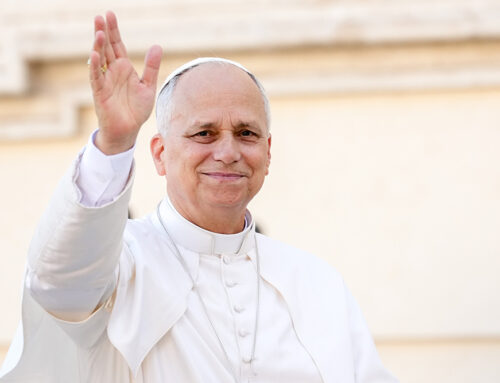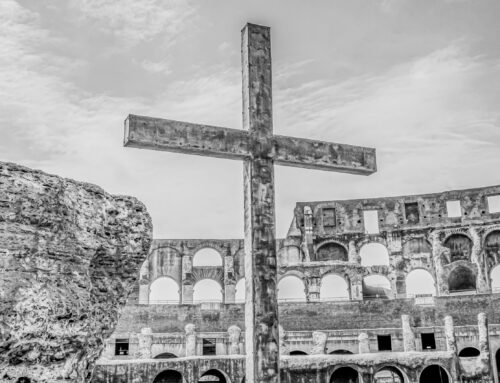W
hen Chief Justice Beverley McLachlin announced her impending retirement in June, Prime Minister Justin Trudeau lauded her as “a judicial leader and trailblazer for almost four decades” who ranks as “one of Canada’s very finest jurists”
A host of other politicians, lawyers and law professors have praised McLachlin in similar terms. In one respect, they are all correct: McLachlin certainly has been a judicial trailblazer. As Chief Justice, she has led the Supreme Court of Canada to work a veritable revolution in the laws and Constitution of Canada, by overturning one crucial judicial precedent after another.
For example, in the Canada v. Bedford judgment of 2013, the Court unanimously struck down long-standing prohibitions in the Criminal Code on keeping bawdy houses and soliciting the services of a prostitute. In reasons for the court in this case, McLachlin contended that these laws violated the rights of prostitutes to “security of the person” in section 7 of the Canadian Charter of Rights and Freedoms to an extent that cannot be justified in any free and democratic country. Yet just a few years earlier in the 1990 Prostitution Reference, this same court had found that these same laws were valid enactments that did not in conflict with section 7 of the Charter.
Correspondingly, in Carter v. Canada, 2015, the Supreme Court of Canada unanimously struck down the longstanding bans on euthanasia and assisted suicide in the Criminal Code on grounds of incompatibility with the Charter. In so doing, the Court overturned the precedent it had set in the nearly identical Rodriguez case in 1993, which upheld the validity of these laws.
Benjamin Berger, associate dean at York University’s Osgoode Hall Law School, is not at all troubled by such arbitrary rulings. To the contrary, in a public tribute to McLachlin, he has commended her precedent-shattering judgments as indications of her “sense that the law has to continue to live. We don’t want a system of law that becomes frozen and rigid.”
Certainly not, but that argument is irrelevant. No one wants a rigid and frozen system of law. Controversy over the Court’s unprecedented judgments centres on the extent, if any, to which unelected judges should presume to change the law to accord with new social circumstances.
Benjamin Cardozo, a law professor who served on the Supreme Court of the United States in the 1930s, addressed this issue in his classic legal text, The Nature of the Judicial Process. In essence, Cardozo maintained that while judges are bound to abide by principles of law established in similar previous cases, this rule of precedent, also known as stare decisis, is not so rigid as to prevent the judiciary from incrementally adjusting the law to “the growing complexity of social relations.” However, he stressed: “This work of modification is gradual. It goes on inch by inch. Its effects must be measured by decades and even centuries. Thus measured, they are seen to have behind them the power and the pressure of the moving glacier.”
Until recently, judges in Canada as well as in Britain and the United States generally exercised such judicial restraint. They only gradually and almost imperceptibly modified the law through innovative interpretations.
In contrast, over the past 30 years, judicial activists on the Supreme Court of Canada have time and again imposed sudden and drastic changes in the laws and the Constitution. To justify this judicial usurpation of legislative powers, McLachlin habitually argues, in effect: “The Charter makes us do it.”
Thus, in a speech last year marking Canada’s 150th anniversary, McLachlin maintained that enactment of the Charter in the Constitution Act, 1982 “confronted courts and the judges who sat on them with unprecedented challenges. The traditional judicial tasks – adjudicating on the division of powers [between the federal and provincial legislatures], interpreting statutes and applying and incrementally developing the law – were supplemented by an altogether new task – putting flesh on the bones of a suite of new and broadly worded constitutional guarantees.”
However, McLachlin did not – and could not – cite any evidence to support her argument. Robert Hawkins, law professor and past president of the University of Regina, is an authority on the legislative history of the Charter. In “Democracy, Judging and Bertha Wilson,” a seminal article published in the McGill Law Journal in 1995, he and his coauthor Robert Martin, Emeritus Professor of Law at Western University, observed that “the legislators who entrenched the Charter in the Constitution had no intention of abandoning the doctrine of parliamentary supremacy in favour of a doctrine of aggressive judicial review. They never intended to pass the legislative torch.
“Instead, the Charter was a typically Canadian compromise, a deal struck after a very politicized negotiation in which it was decided that rights would be protected by the Constitution, but in such a way as to respect, to the greatest degree possible, the supremacy of Parliament. There was to be judicial review, but a fair reading of the historical record shows that it was intended to be careful and restrained judicial review.”
Ian Hunter, Emeritus Professor of Law at Western, takes the same view. In a brilliant and succinct treatise entitled Three Faces of the Law: A Christian Perspective, he contends that “under the Charter, the Court could have – and should have – developed a doctrine of judicial self-restraint, as the United States Supreme Court has done on occasion. Instead, the Supreme Court of Canada leapt at the opportunity to substitute its will for that of Parliament on the most contentious and divisive social issues.”
That includes abortion. In the most calamitous judgment in Canadian history, R. v. Morgentaler, 1988, a majority of the Supreme Court of Canada arbitrarily struck down Canada’s abortion law on the pretence that even the very limited protection it provided for life in the womb violated the right to life, liberty and security of the person in section seven of the Charter.
Writing in dissent, Justice William McIntyre pointed out that there is nothing in the Charter that authorizes the courts to set policy on abortion. He concluded: “The solution to this question in this country must be left to Parliament. It is for Parliament to pronounce on, and to direct, social policy. This is not because Parliament can claim all wisdom and knowledge but simply because Parliament is elected for that purpose in a free democracy and, in addition, has the facilities – the exposure to public opinion and information – as well as the political power to make effective its decisions.”
Granted, the opinions of Hawkins, Hunter, Martin and McIntyre represent only a minority view. Most contemporary lawyers, law professors and judges in Canada have embraced judicial activism. They relish the power, privilege and wealth that unbridled judges like McLachlin have conferred upon the legal profession by usurping the legislative authority of Parliament.
In the process, these judicial activists have also undermined the rule of law. In The Road to Serfdom, Friedrich Hayek explained that “the great principle known as the Rule of Law” safeguards freedom and democracy by assuring that “government in all its actions is bound by rules fixed and announced beforehand – rules which make it possible to foresee with fair certainty how the authority will use its coercive powers in given circumstances and to plan one’s individual affairs on the basis of this knowledge.”
By this standard, are Canadians still protected by the rule of law? Are we still uniformly governed by “legal rules fixed and announced beforehand?”
Obviously not. And this is of fundamental importance. In reasons for judgment in Bedford, even McLachlin acknowledged: “Certainty in the law requires that courts follow and apply authoritative precedents. Indeed, this is the foundational principle upon which the common law relies.”
Quite so, but look not just at what McLachlin says but what she does. Despite recognizing the fundamental importance of following authoritative precedents, she and her colleagues in Bedford reversed the precedent which the Court had set in the 1990 Prostitution Reference.
In defence of this blatant inconsistency, McLachlan promulgated a new understanding of the rule of precedent in Bedford by decreeing that a judge is now entitled to reconsider any precedent whenever “a new legal issue is raised, or if there is a significant change in the circumstances or evidence.”
Albertos Polizogopoulos, a prominent appellate lawyer, pointed out the calamitous implications of McLachlin’s new rule of precedent in “Pandora’s Box,” (C2C Journal, January 14, 2014): “Chief Justice McLachlin, perhaps intentionally or perhaps unwittingly, has deconstructed the basis of our legal system. What she is saying is, so long as there is a different argument made a lower court judge is not bound by precedent or stare decisis.”
In this same article, Polizogopoulos forecast that McLachlin’s reinterpretation of precedent might not only lead to “the decriminalization of euthanasia and assisted suicide in the short-term,” but will also in the long-term, “cause legal chaos, frivolous legal proceedings and jurisprudential uncertainty.”
Indeed, it was barely two years after Bedford that the Supreme Court of Canada proceeded in Carter to legalize euthanasia and assisted suicide, by reversing the precedent which the Court had set in Rodriguez, 1990.
In sum, then, this is the sorry legacy of McLachlin as Chief Justice of Canada: For the past 14 years, she has played a key role in aiding and abetting the judicial subversion of freedom, democracy and the rule of law.





